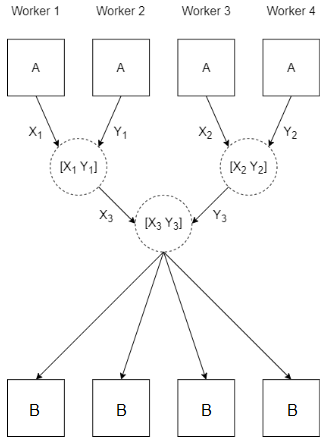gcat
(不推荐)在 spmd 工作单元上连接数组
说明
B = gcat(A)spmd 代码块或通信作业的工作单元上定义的数组 A。
当您使用 parfor、parfeval 或 parfevalOnAll 在并行池上运行代码时,工作单元是独立的并且彼此不会通信。如果您在这些工作单元上使用 gcat,其结果与在客户端上使用 gcat 相同。
仅当每个工作单元上定义的数组 A 可以沿第二个维度连接时,您才可以使用 gcat。
gcat 沿着第二个维度连接数组,然后将结果存储在所有工作单元上。A 的值取自每个工作单元并按 labindex 顺序连接起来。例如,gcat(labindex) 返回 1:numlabs。
如果 numlabs 等于 1,则 B 等于 A。
B = gcat(A,dim,destination)A,并将结果仅存储在一个工作单元上。
